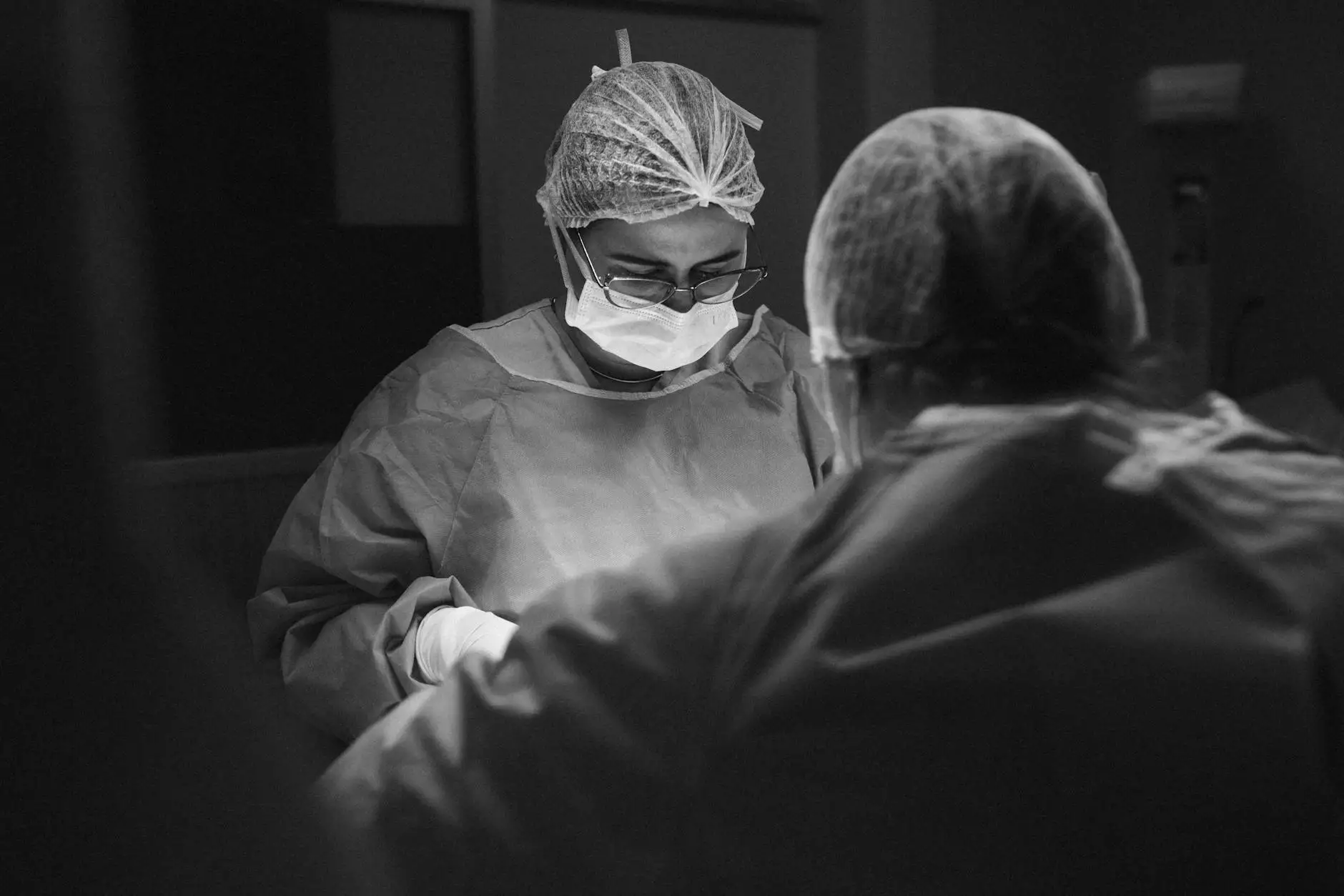Comprehensive Guide to Risk Reducing Salpingo-Oophorectomy: A Vital Strategy for Women's Health

In recent years, advancements in gynecologic oncology have transformed the landscape of women's health, especially in the realm of cancer prevention. One of the pioneering procedures gaining prominence is risk reducing salpingo-oophorectomy. This surgical intervention offers women, particularly those at heightened risk of ovarian and breast cancers, a proactive approach to considerably decrease their likelihood of developing these life-threatening diseases.
Understanding Risk Reducing Salpingo-Oophorectomy: Definition and Purpose
Risk reducing salpingo-oophorectomy, often abbreviated as RRSO, is a preventive surgical procedure involving the removal of both the fallopian tubes and ovaries. Unlike traditional surgeries prompted by diagnosed pathology, RRSO is performed primarily as a preventive measure for women with a significant genetic or familial predisposition to ovarian, fallopian tube, or breast cancers.
This procedure has gained recognition as an effective strategy, particularly for women carrying inherited mutations such as BRCA1 and BRCA2 genes, which dramatically increase the risk of ovarian and breast malignancies. The primary goal of RRSO is to significantly reduce the incidence of ovarian cancer—one of the most lethal gynecologic cancers due to its often late diagnosis—and to improve overall survival rates.
The Significance of Risk Reducing Salpingo-Oophorectomy in Women's Health
Women today are increasingly aware of their genetic health and the importance of proactive healthcare choices. For women with known high-risk genetic factors, the implementation of risk reducing salpingo-oophorectomy offers multifaceted benefits:
- Significant risk reduction of ovarian and fallopian tube cancers: Studies show up to 80-90% decreased risk post-surgery.
- Lowered risk of breast cancer: Particularly in women with BRCA mutations, as estrogen production decreases after ovarian removal.
- Potential to extend lifespan: Early intervention can prevent lethal cancer development, thereby improving survival chances.
- Peace of mind and improved quality of life: Reducing fear and uncertainty associated with hereditary cancer syndromes.
Who Are Ideal Candidates for Risk Reducing Salpingo-Oophorectomy?
Selection of candidates requires thorough genetic counseling and medical evaluation. The following groups are typically advised to consider this preventive procedure:
- Women with confirmed BRCA1 or BRCA2 gene mutations: These genetic alterations confer a lifetime ovarian cancer risk of 40-60% (BRCA1) and 10-20% (BRCA2).
- Women with a significant family history of ovarian, breast, or related cancers: Especially when multiple family members are diagnosed with such cancers.
- Women aged 35-45: Age is a critical factor; the procedure often recommended after completing childbirth and when they are at a suitable age for menopause, considering individual risk factors.
- Women with prior history of hereditary cancer syndromes: Such as Lynch syndrome, which also elevates ovarian cancer risk.
The Surgical Procedure: What to Expect During Risk Reducing Salpingo-Oophorectomy
The procedure is typically performed via minimally invasive techniques such as laparoscopy, although open surgery may be necessary depending on individual circumstances. Here are the key steps involved:
- Preoperative Evaluation: Includes imaging, blood tests, and comprehensive counseling.
- Anesthesia Administration: General anesthesia is administered to ensure patient comfort.
- Surgical Removal: The surgeon carefully removes both fallopian tubes and ovaries, ensuring minimal damage to surrounding tissues.
- Histopathological Examination: Excised tissues are sent for pathology to confirm absence of malignancy—if any pathology is found, further treatment is planned accordingly.
- Postoperative Care: Monitoring for complications, pain management, and recovery planning.
Benefits of Risk Reducing Salpingo-Oophorectomy
The benefits of this surgical intervention extend beyond cancer prevention. Some of the notable advantages include:
- Substantial reduction in mortality related to ovarian and breast cancers: Evidence suggests a dramatic decrease in cancer-related deaths among high-risk women undergoing RRSO.
- Enhanced surveillance and peace of mind for women aware of their genetic predispositions.
- Opportunity for hormone replacement therapy (HRT): Post-menopausal women may consider HRT to alleviate symptoms of menopause, under medical supervision.
Potential Risks and Considerations
While risk reducing salpingo-oophorectomy offers compelling benefits, it also carries certain risks and considerations, necessitating informed decision-making:
- Induction of surgical menopause: Sudden hormonal changes can cause hot flashes, vaginal dryness, decreased libido, and osteoporosis if HRT not administered.
- Surgical risks: Bleeding, infection, injury to surrounding organs, though rare with experienced surgeons.
- Potential impact on bone health and cardiovascular risk: Loss of estrogen can influence long-term health, requiring monitoring and management.
- Psychosocial impact: Emotional effects related to early menopause and body image concerns.
Emerging Research and Future Directions
Recent scientific advancements have refined our understanding of the pathogenesis of ovarian cancer, particularly the role of the fallopian tubes. Notably:
- Fallopian tube origin hypothesis: Mounting evidence suggests many high-grade serous ovarian cancers originate from the fallopian tubes, leading to new preventive strategies focusing on salpingectomy.
- Salpingectomy as a risk reduction strategy: For women not ready for oophorectomy, removal of only the fallopian tubes serves as an intermediate preventive step.
- Genomic and biomarker research: Continuous research aims to improve risk assessment and personalize preventive strategies.
Choosing the Right Specialist for Your Risk Reducing Salpingo-Oophorectomy
Opting for risk reducing salpingo-oophorectomy requires expert surgical and genetic counseling. Specialists in gynecologic oncology and experienced obstetricians & gynecologists, like those listed on drseckin.com, are best equipped to guide you through the process, providing personalized health plans that weigh benefits and risks.
Conclusion: Empowering Women Through Proactive Healthcare Choices
In the era of precision medicine, risk reducing salpingo-oophorectomy exemplifies how targeted surgical interventions can dramatically alter disease trajectories, especially for women with hereditary cancer risk factors. By understanding the procedure’s benefits, risks, and appropriate timing, women can make informed decisions to proactively safeguard their health, potentially saving lives and improving quality of life.
For personalized consultations, expert opinions, and comprehensive care, visit drseckin.com. It’s never too early or too late to prioritize your health and embrace preventive strategies that empower you for a healthier future.









